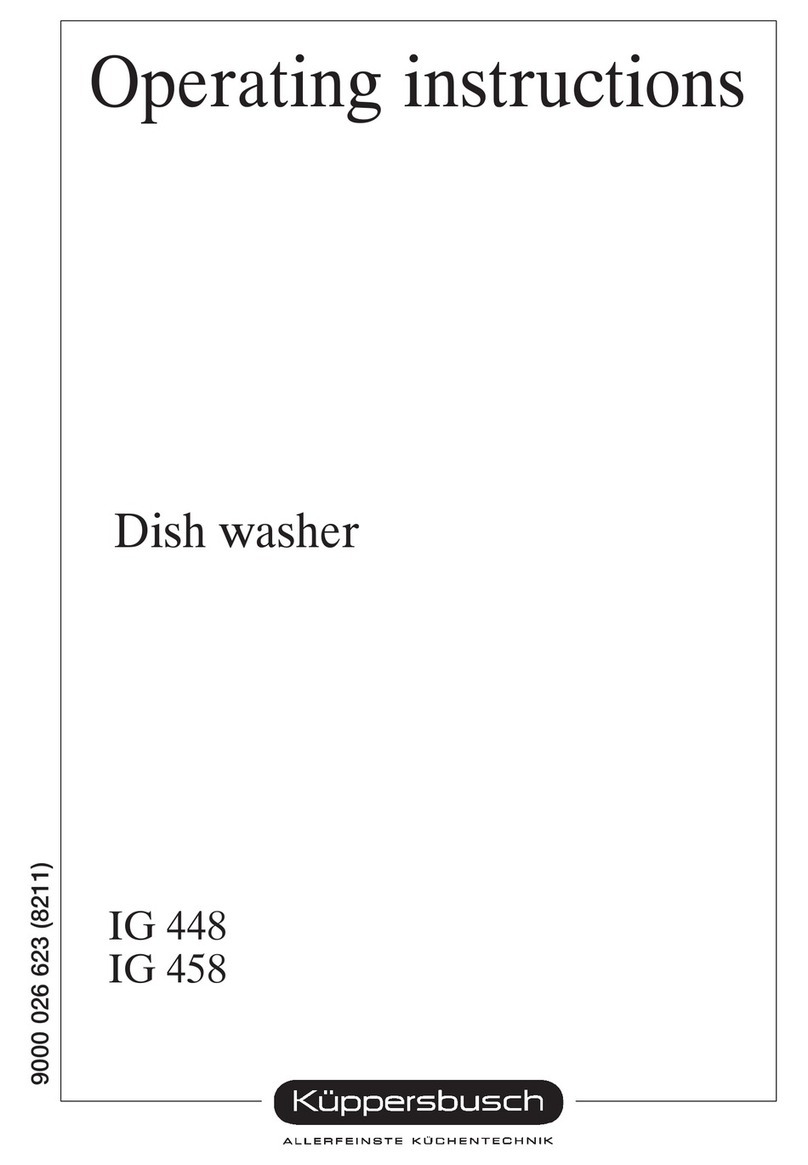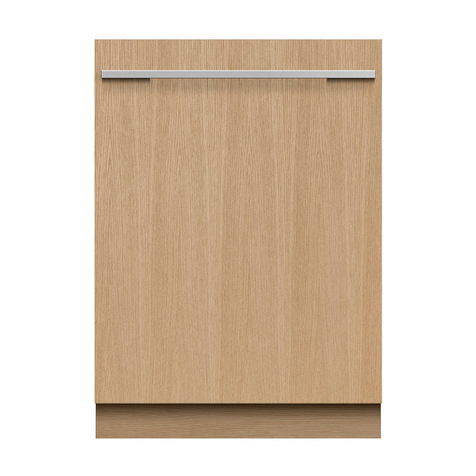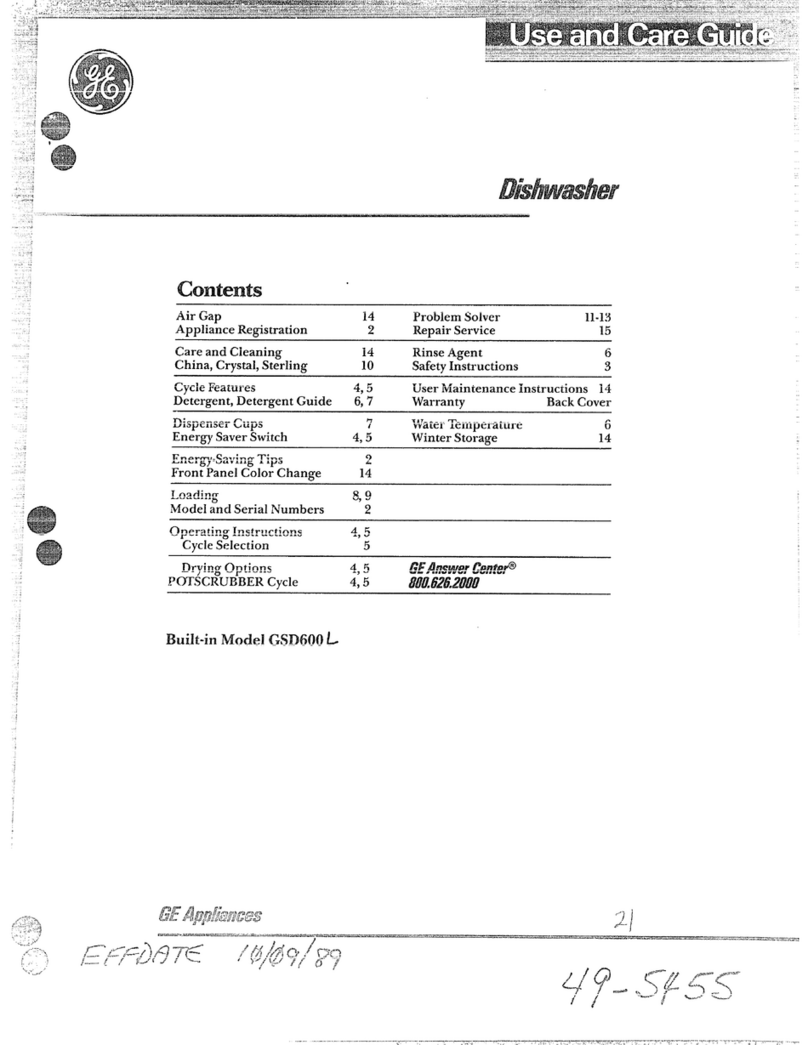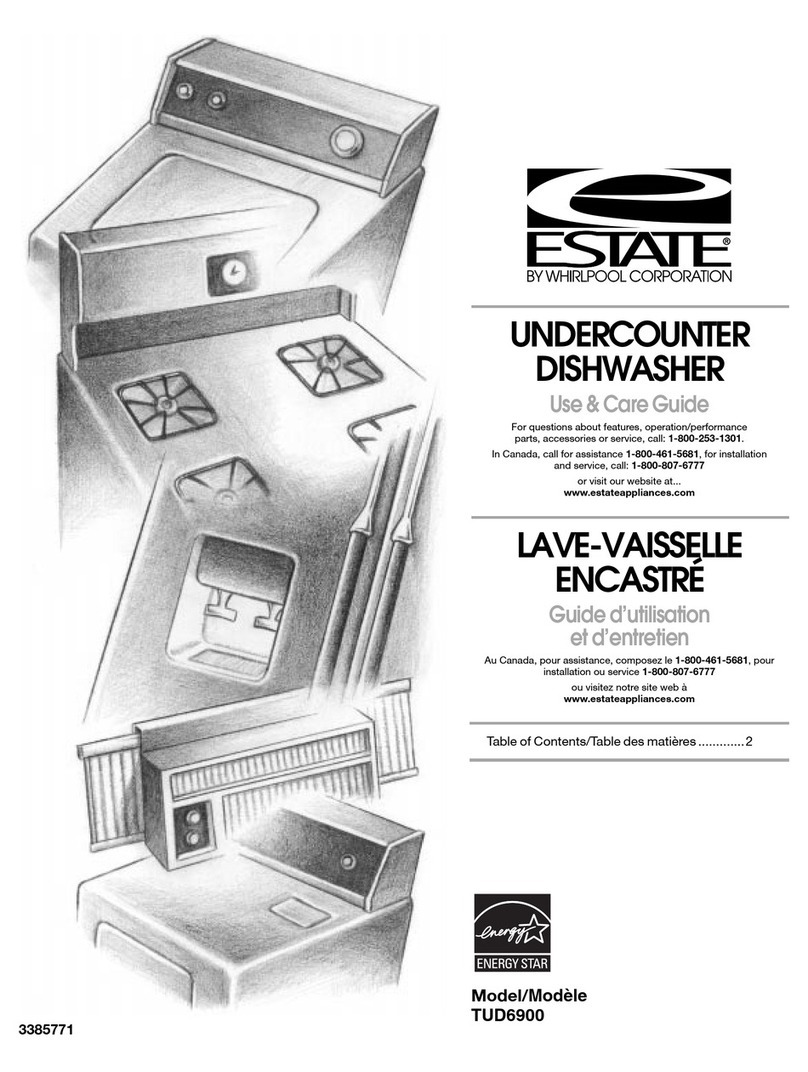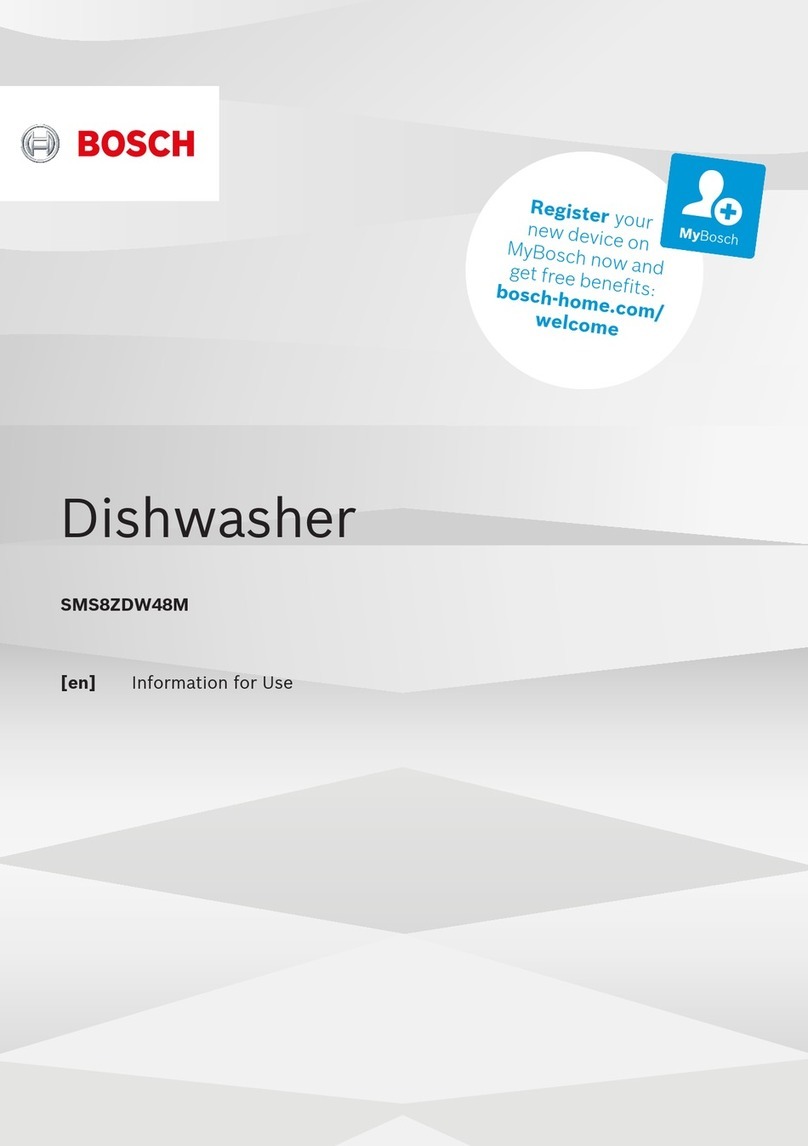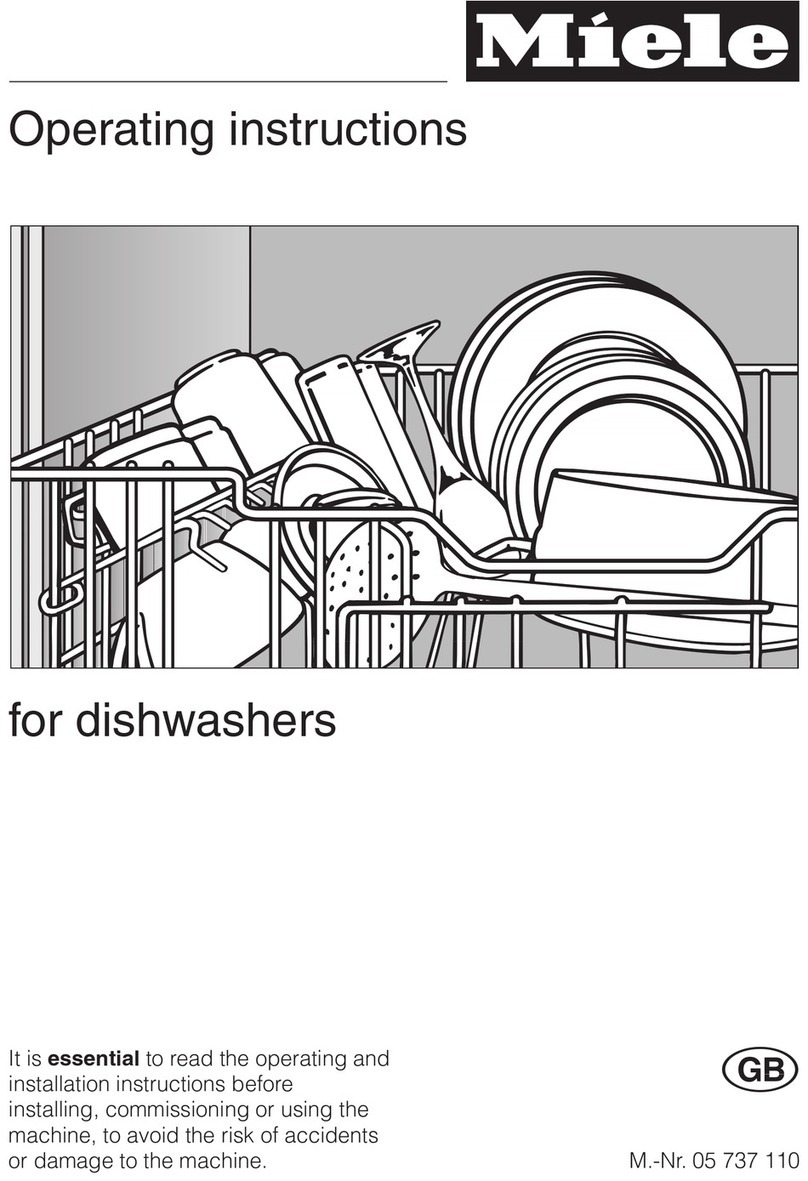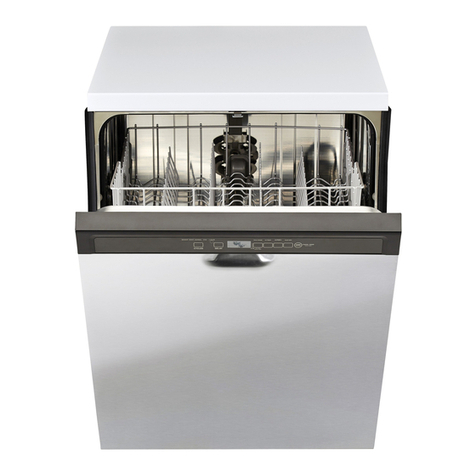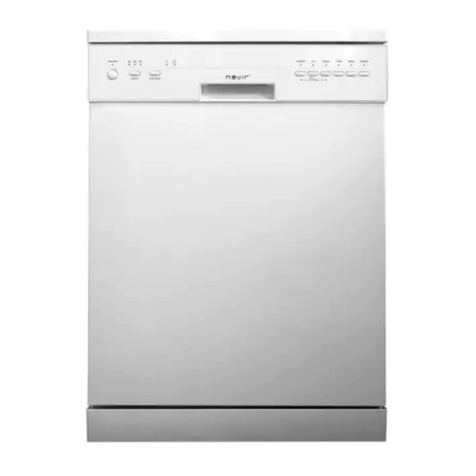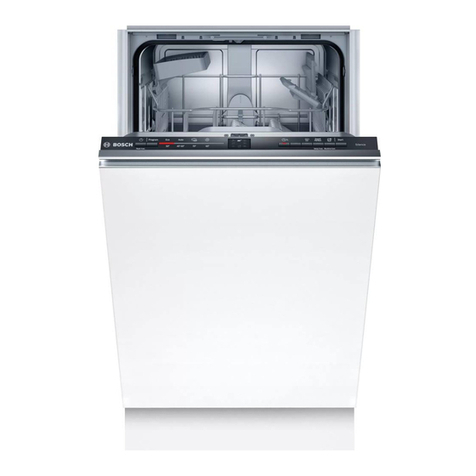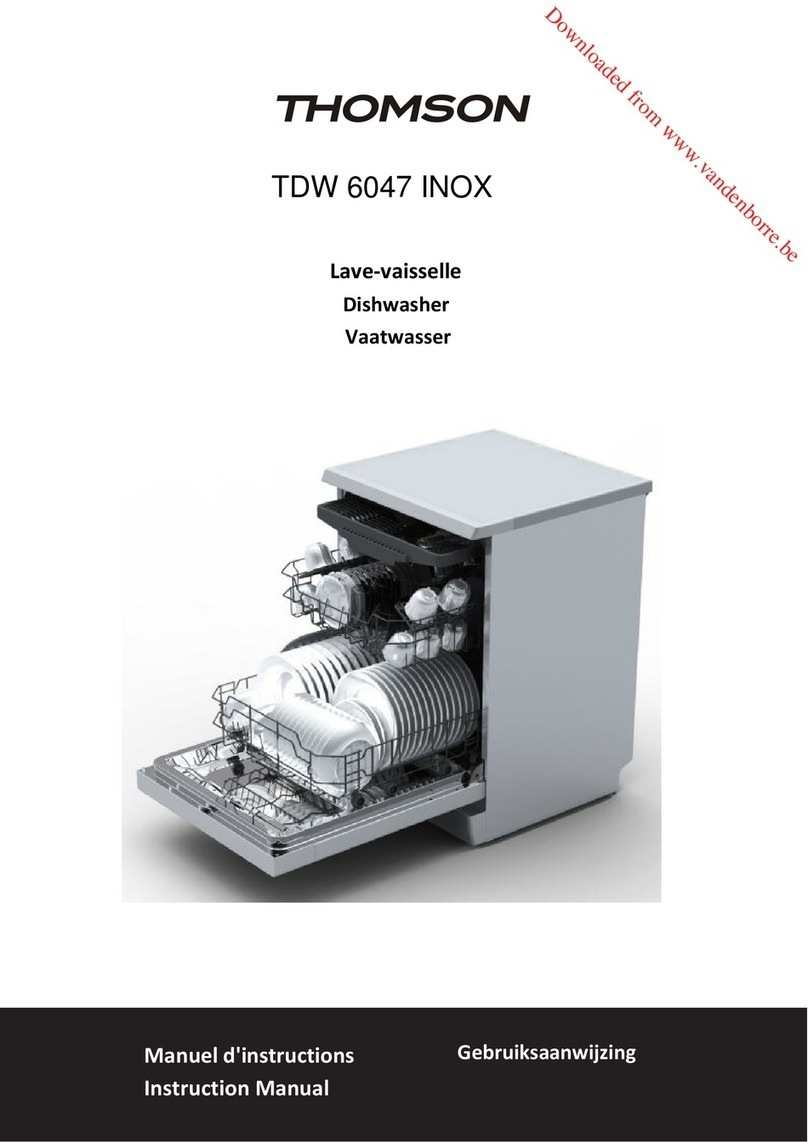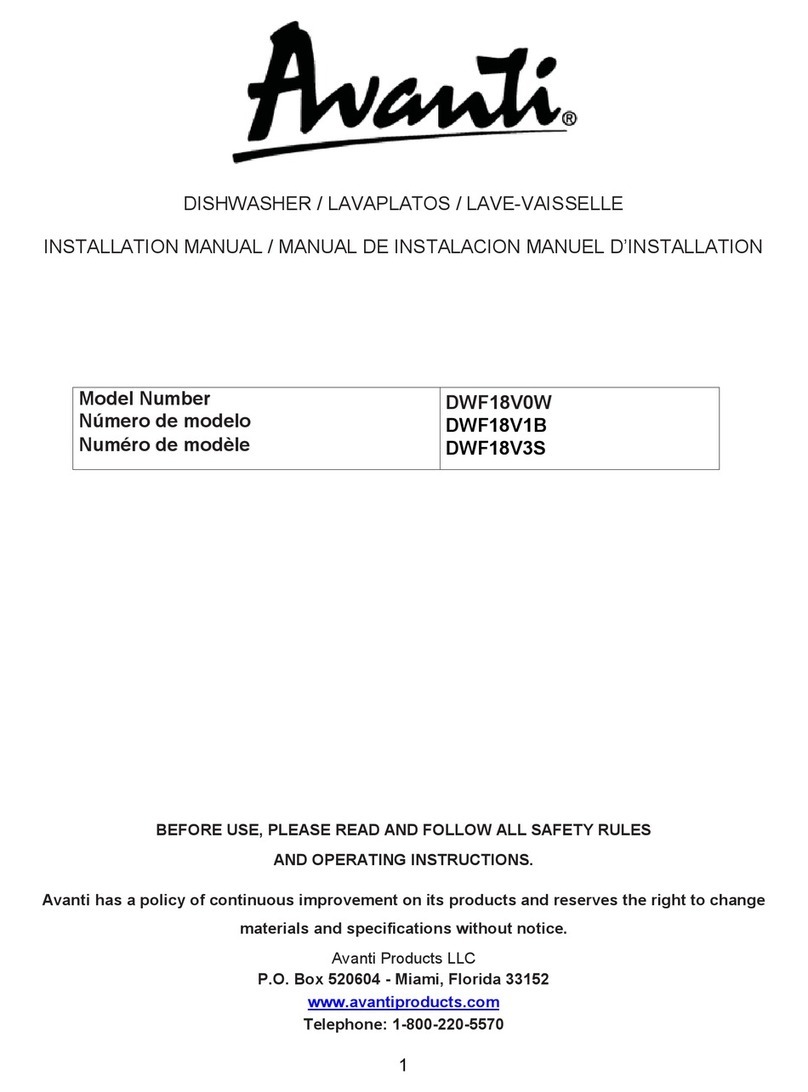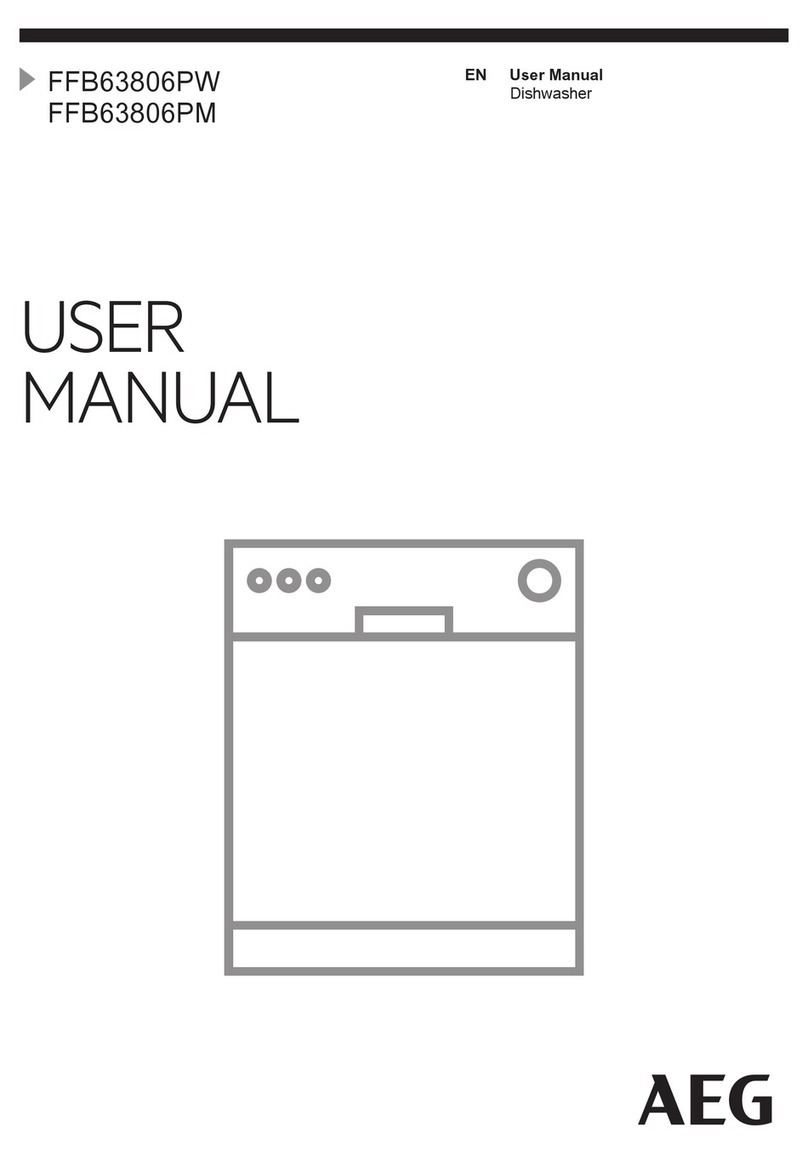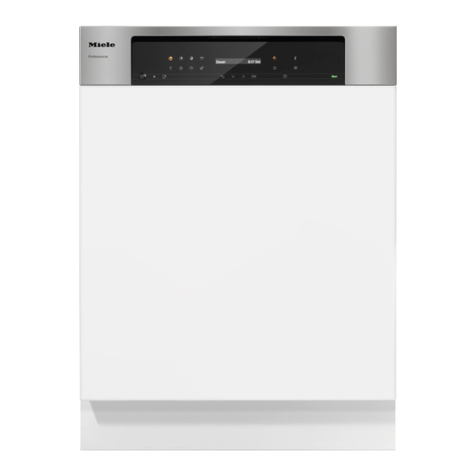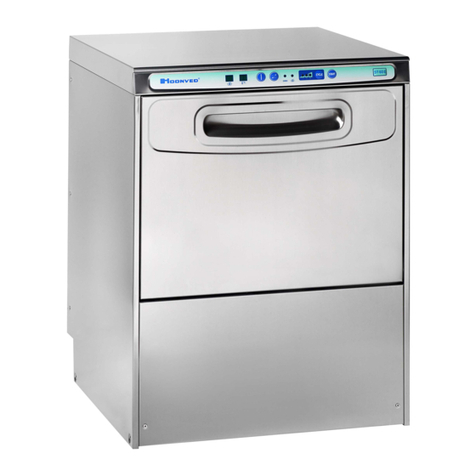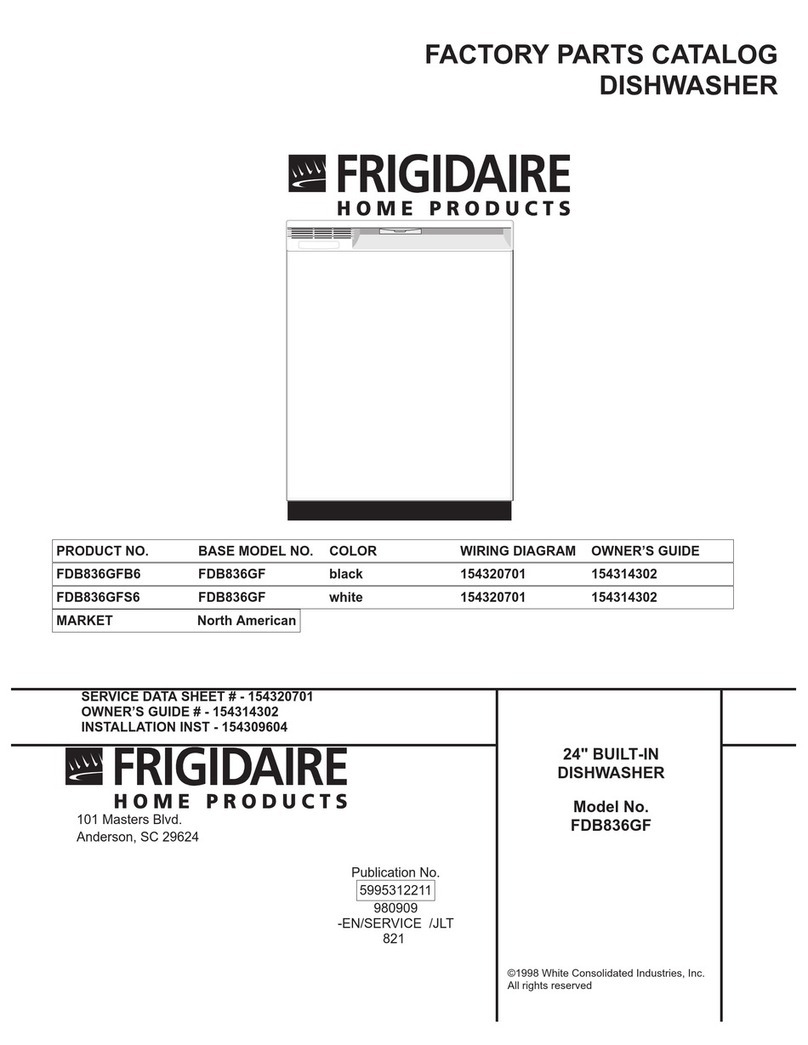Forte F24DWS250SS User manual

Owner’s Manual
Dishwasher
Household Use Only
F24DWS250SS
READ ALL INSTRUCTIONS CAREFULLY BEFORE USING THE DISHWASHER.

Important Safety instructions
Dishwasher Components
5
2-4
7-12
Dishwasher Setup
Dishware Materials
13
Loading the Dishwasher
14-17
Dishwasher Cycles and Options
18
Wash Cycle information
19
Operating the Dishwasher
20-22
Maintenance and cleaning
23-24
Troubleshooting Tips
25-26
CONTENT
1
Product Diagram
6
27-28
Warranty Information

WARNING
NOTICE
Misuse of the dishwasher can result in serious injury or death. Do not use the
dishwasher in any way not covered in this manual or for any purpose other than
those explained in the following pages.
Severe product damgae and/or injury could result from the use of unqualified service
technicians or non-original replacement parts. All repairs must be performed by a
qualified service techician using only original equipment factory replacement parts.
Never use harsh chemicals to clean your dishwasher. Some chloride-containing
products can damage your dishwasher and may present health hazards!
Electrical shock or fire could result if the electrical supply for the dishwasher covered
in this manual is incorrectly installed or if the dishwasher has been improperly
grounded. Do not use the dishwasher covered in this manual unless you are certain
the electrical supply has been correctly installed and the dishwasher has been
properly grounded.
Never use steam cleaning products to clean your dishwasher. The manufacturer will
not be responsible for the possible damages or consequences.
To avoid possible dishwasher damage,do not use harsh chemicals,abrasive
cleaners, scouring pads(metal or plastic),or abrasive cloths/paper towels to clean
your dishwaher’s exterior door panel. Your dishwasher’s exterior door panel can be
damaged by doing so.
NSF/ANSI 184 Certified residential dishwashers are not intended for licensed food
establishments
IMPORTANT SAFETY INSTRUCTIONS
SAVE THESE INSTRUCTION
2

To avoid floor damage and possible mold growth, do not allow wet areas to remain
around or under the dishwasher.
Protect your dishwasher from the elements. Protect against freezing to avoid
possible damage to the fill valve. Damage caused by freezing is not covered by the
warranty.
WARNING: To reduce the risk of electric shock, fire, or injury to persons, the
installer must ensure that the dishwasher is completely enclosed at the time of
installation.
A hose that attaches to a sink spray can burst if it is installed on the same water line
as the dishwasher. If your sink has one, it is recommended that the hose be
disconnected and the hole plugged.
When using your dishwasher, follow basic precautions, including the following:
a) Read all instructions before using the dishwasher.
b) Use the dishwasher only for its intended function.
c) Use only detergents or wetting agents recommended for use in a dishwasher
and keep them out of the reach of children.
d) When loading items to be washed:
1) Locate sharp items so that they are not likely to damage the door seal; and
2) Load sharp knives with the handles up to reduce the risk of cut-type injuries.
e) Do not wash plastic items unless they are marked ″dishwasher safe″ or the
equivalent. For plastic items not so marked, check the manufacturer’s
recommend-ations.
f) Do not touch the heating element during or immediately after use.
g) Do not operate your dishwasher unless all enclosure panels are properly
in place.
h) Do not tamper with controls.
i) Do not abuse, sit on, or stand on the door or dish rack of the dishwasher.
j) To reduce the risk of injury, do not allow children to play in or on a dishwasher.
k) Under certain conditions, hydrogen gas may be produced in a hot-water system
that has not been used for two weeks or more. HYDROGEN GAS IS EXPLOSIVE.
If the hot-water system has not been used for such a period, before using the
dishwasher turn on all hot-water faucets and let the water flow from each for
several minutes. This will release any accumulated hydrogen gas. As the gas is
flammable, do not smoke or use an open flame during this time.
l) Remove the door to the washing compartment when removing an old dishwasher
from service or discarding it.
This dishwasher is provided with Installation Instructions and this Use and Care
Manual. Read and and understand all instructions before using the dishwasher.
WARNING: To reduce the risk of fire,electrical
shock,or serious injury,observe the following
3

This appliance must be grounded. In the event of a malfunction or breakdown,
grounding will reduce the risk of electric shock by providing a path of least
resistance for electric current. This appliance is equipped with a cord having an
equipment-grounding conductor and a grounding plug. The plug must be plugged
into an appropriate outlet that is installed and grounded in accordance with all local
codes and ordinances.
WARNING – Improper connection of the equipment-grounding conductor can result
in a risk of electric shock. Check with a qualified electrician or service representative
if you are in doubt whether the appliance is properly grounded. Do not modify the
plug provided with the appliance,if it will not fit the outlet, have a proper outlet
installed by a qualified electrician.
WARNING: This product contains one or more chemicals known to the State of
California to cause cancer, birth defects, or other reproductive harm.
4

5
Additional Features Description
Time Remaining Indicator
49dBA Sound Level
Delay Start
Rinse Cycle
Plastic Item Clips
Low Salt NotificationLight
Low Rinse Aid Notification
Light
Sanitized Notification
Light
Energy Efficient 270kWh
Indicates the cycle time remaining.
Quiet washing.
Start of a cycle can be delayed in 1-hour increments up to 24 hours.
If you need to pre-rinse dishes to avoid odors, let the dishwasher
do the work for you. Place unrinsed dishes inside dishwasher and
select the “Rinse” cycle. Uses less water than hand rinsing and
very low energy. Note: Do not use detergent in this cycle.
Securely holds light-weight plastic accessories(cups,lids,etc.).
Illuminates to indicate Salt is low.
Illuminates to indicate Rinse Aid is low.
Illuminates to indicate sanitation requirements are met.
ENERGY STAR qualified.
DISHWASHER COMPONENTS
Wash Cycles Wash Cycle Options
Model Sanitize
Top
Rack
Bottom
Rack
Half
load
N/AN/A
Heavy Delicate Light Express RinseNormal
F24DWS250SS

Top rack Spray Arms
Fork Shelf
6
1
1
2
2Upper rack
3
3
Water Softener
4
4
Filters
5
5
6
6Cutlery Basket
Lower rack
7
7
Detergent dispenser
8
8
Rinse Aid Dispenser
9
9
PRODUCT DIAGRAM

7
Before using your dishwasher for the first time:
A. Set the water softener
B. Pour 500ml of water inside the salt container and then fill with dishwasher salt
C. Fill the rinse aid dispenser
D. Function of detergent
A. Water Softener
The water softener is designed to remove minerals and salts from the water, which would
have a detrimental or adverse effect on the operation of the appliance. The higher the content
of these minerals and salts, the harder the water is. The softener should be adjusted
according to the hardness of the water in your area. Your local Water Authority can advise
you on the hardness of the water in your area.
Setting
The amount of salt dispensed can be set from H0 to H7.
Salt is not required at the set value H0.
1. Find out about the hardness value of your tap water. Your water utility company will help you
with this.
2. Set value can be found in the water hardness table.
3. Close the door.
4. Switch on"Power"switch.
5. Hold down "Delay" button and then press "Program" button for 5 seconds.The buzzer rings
one time and H.. flashes on the digital display.(factory setting is H0)
Clark
Water hardness
Range
Mmol/l Set value on
the machine
0-8
9-10
11-12
13-15
16-20
21-26
27-38
39-62
soft
soft
medium
medium
medium
hard
hard
hard
0-1.1
1.2-1.4
1.5-1.8
1.9-2.1
2.2-2.9
3.0-3.7
3.8-5.4
5.5-8.9
H0
H1
H2
H3
H4
H5
H6
H7
Water hardness table
To change the setting:
1. Press " Delay " button.
Each time the button is pressed, the set value
increasesby one level;when the value of H7 has
been reached, the display jumps back to H0(off).
2. Press " Program " button. The chosen setting
has now been stored.
Contact your local water board for information on
the hardness of your water supply.
DISHWASHER SETUP

B. Loading the Salt into the Softener
Always use salt intended for use with dishwasher.
NOTE: If your model has no water softener, you may skip this section
WATER SOFTENER
The hardness of the water varies from place to place. If hard water is used in the
dishwasher, deposits will form on the dishes and utensils.
The appliance is equipped with a special softener that uses salts specifically
designed to eliminate lime and minerals from the water.
The salt container is located beneath the lower basket and should be filled as follows:
Attention!
Only use salt specifically designed for use in dishwashers! All other types of salt not
specifically designed for use in a dishwasher, especially table salt, will damage the water
softener. In case of damages caused by the use of unsuitable salt the manufacturer does
not give any warranty nor is liable for any caused damages.
Only fill with salt just before starting one of the complete washing programmes.
This will prevent any grains of salt or salty water, which may have been split, remaining
on the bottom of the machine for any period of time, which may cause corrosion.
After the first wash cycle the control panel light expires.
12
11
A. Remove the lower basket and then unscrew and remove the cap from the salt container.
B. If you are filling the container for the first time, fill 2/3 of its volume with water (around 500ml).
C. Place the end of the funnel (supplied) into the hole and introduce about 2kg of salt. It is
normal for a small amount of water to come out of the salt container.
D. Carefully screw the cap back on.
E. Usually, the salt warning light will be off in 2-6 days after the salt container is filled with salt.
8

NOTE: 1. The salt container must be refilled when the salt warning light in the control panel comes
on. Though the salt container is filled enough, the indicator light may not black out before
the salt fully dissolve. If there is no salt warning light in the control panel (for some models),
you can judge when to load the salt into the softener by the cycles that the dishwasher had
run (see the following schema).
2. If there are spills of the salt, a Rinse program could be run to wipe them out.
C. Fill the Rinse Aid Dispenser
Function of Rinse Aid
Rinse aid is automatically added during the last rinse, ensuring thorough rinsing, spot and streak
free drying.
Attention!
Only use branded rinse aid for dishwasher. Never fill the rinse aid dispenser with any other substances
(e.g. dishwasher cleaning agent, liquid detergent). This would damage the appliance.
When to Refill the Rinse Aid Dispenser
If there is no rinse-aid warning light on the control panel, you can judge the amount of rinse-aid by the
color of the optical level indicator "D" located next to the cap. When the rinse-aid container is full, the
whole indicator will be dark .As the rinse aid diminishes, the size of the dark dot decreases. You should
never let the rinse aid get below 1 / 4 full.
As the rinse aid diminishes, the size of the black dot
on the rinse aid level indicator changes, as illustrated below.
Full
3 / 4 full
1 / 2 full
1 / 4 full - Should refill to eliminate spotting
Empty
RINSE AID DISPENSER
9

To open the dispenser, turn the cap to the "open" (left) arrow and lift it out.
Pour the rinse aid into the dispenser, be careful not to overfill. The volume of the rinse aid
container is about 140ml. Be careful not to overfill the dispenser, because this could cause over
sudsing. Wipe away any spills with a damp cloth.
Replace the cap by inserting it aligned with "open" arrow and turning it to the "closed" (right)
arrow.
1
2
3
The rinse aid is released during the final rinse to prevent water from forming droplets on your dishes
that can leave spots and streaks. It also improves drying by allowing water to sheet off the dishes.
Your dishwashers are designed to use liquid rinse aids. The rinse aid dispenser is located inside
the door next to the detergent dispenser. To fill the dispenser, open the cap and pour the rinse aid
into the dispenser until the level indicator turns completely black. Don't forget to replace the cap
before you close dishwasher door.
Attention!
Clean up any rinse aid split during filling with an absorbent cloth to avoid excess foaming during the
next wash.
Adjusting Rinse Aid Dispenser
The rinse aid dispenser has four or six settings. Always start with
the dispenser set on "4" If spots and poor drying are problems,
increase the amount of rinse aid dispensed by removing the
dispenser lid and rotating the dial to "5". If the dishes still are not
drying properly or are spotted, adjust the dial to the next higher
number until your dishes are spot-free. The dose is factory set in
the position 5.
C. Function of Detergent
Detergents with its chemical ingredients are necessary to remove dirt, crush dirt and transport it out
of the dishwasher. Most of commercial quality detergents are suitable for this purpose.
Concentrated Detergent
Based on their chemical composition, dishwasher can be split in two basic types:
■conventional, alkaline detergents with caustic components
■low alkaline concentrated detergents with natural enzymes
The use of "Normal" washing program in conjunction with concentrated detergents reduces
pollution and is good for your dishes; these washing programs are specially matched to the
dirt-dissolving properties of the enzymes of the concentrated detergent. For this reason"Normal"
washing program in which concentrated detergents are used can achieve the same results
that can otherwise only be achieved using"intensive" program.
Detergent Tablets
Detergent tablets of different brands dissolve at different speeds. For this reason some detergent
10

Cannot dissolve and develop their full cleaning power during short programs. Therefore please
use long programs when using detergent tablets, to ensure the complete removal of detergent
residuals.
Detergent Dispenser
The dispenser must be refilled before the start of each washing cycle following the instructions
provided in the Wash Cycle Table. Your dishwashers use less detergent and rinse aid than
conventional dishwashers. Generally, only one tablespoon of detergent is needed for a normal
wash load. Also, more heavily soiled items need more detergent. Always add the detergent
just before starting dishwasher, otherwise it could get damp and will not dissolve properly.
Amount of Detergent to Use
1 2
NOTE:
If the lid is closed: press release button. The lid springs open.
Always add the detergent just before starting each wash cycle. Only use branded detergent aid
for dishwasher.
1
2
WARNING!
Dishwasher detergent is corrosive! Take care to keep it out of reach of children
Use only detergent specifically made for use in dishwashers. Keep your detergent fresh and dry.
Don't put powder detergent into the dispenser until you're ready to wash dishes.
2
1
1
2
3
4
5
6
MAX
2
1
Fill in the detergent
Fill the detergent dispenser with detergent.
The marking indicates the dosing levels , as
illustrated on the right:
The place of main wash cycle detergent placed,
MIN means approximately of detergent.
The place of pre-wash cycle detergent placed ,
approximately 0.011lb of detergent.
" " 0.044lb
Please observe the manufacturer's dosing and storage recommendations as stated on the
detergent packaging.
Close the lid and press until it locks in place.
If the dishes are heavily soiled, place an additional detergent dose in the pre-wash detergent
chamber. This detergent will take effect during the pre-wash phase.
11

NOTE:
You find information about the amount of detergent for the single program on the last page.
Please be aware that according to the level soiling and the specific hardness of water, differences
are possible.
Please observe the manufacturer's recommendations on the detergent packaging.
Detergents
There are 3 sorts of detergents
1.With phosphate and with chlorine
2.With phosphate and without chlorine
3.Without phosphate and without chloride
Normally new pulverized detergent is without phosphate. The water softener function of phosphate
is not given. In this case we recommend to fill salt in the salt container even when the hardness of
water is only 6 dH. If detergents without phosphate were used in case of hard water often white
spots appear at dishes and glasses. In this case please add more detergent to reach better results.
Detergents without chlorine do only bleach a little. Strong and coloured spots will not removed
completely. In this case please choose a programme with higher temperature.
12

13
Note: Before using your dishwasher for the first time,check the information in this section.
Some items are not dishwasher safe and should be hand washed; others require special loading.
Recommended
Aluminum: Colored anodized aluminum may fade over time. Minerals in your water may cause
the aluminum to darken or spot. This can usually be removed with a soap-filled steel wool pad.
China,Crystal,Stoneware: Some hand-painted utensils may discolor, fade or spot. Hand wash
these utensils. Position fragile glassware so that it will not fall over or come in contact with
other utensils during the wash cycle.
Glass: Milk glasses may discolor or become yellow.
Non-stick Coatings: Apply a light coating of vegetable oil to non-stick surfaces after drying.
Plastics: Make sure the plasticware is dishwasher safe.
Stainless Steel,Sterling Silver and Silver Plates: Load these so they do not come in contact
with other metals.
Not Recommended
Acrylic: Crazing,small cracks throughout the acrylic,may occur.
Adhesive-Joined Pieces: Adhesives that join materials such as plastic,wood,bone,steel,
copper,tin,etc. may loosen.
Bone-Handled Utensils: Handles may separate.
Iron: Iron will rust. Hand wash and dry immediately.
Non-Dishware items: Your dishwasher is intended for use in cleaning ONLY standard house-
hold dishware and kitchenware.
Pewter,Brass,Bronze: These items will tarnish.Hand wash and dry immediately.
Tin: Tin will stain. Hand wash and dry immediately.
Wood: Wooden bowls,wooden utensils and utensils with wooden handles can crack, warp
and lose their finish.
DISHWARE MATERIALS

For best performance of the dishwasher, follow these loading guidelines. Features and appearance
of baskets and silverware baskets may vary from your model.
Attention before or after Loading the Dishwasher Baskets
Scrape off any large amounts of leftover food. It is not necessary to rinse the dishes under running
water. Place objects in the dishwasher in the following way:
1.Items such as cups, glasses, pots/pans, etc. are stood upside down.
2.Curve items, or those with recesses, should be at a slant so that water can run off.
3.They are stacked securely and can not tip over.
4.They do not prevent the spray arms from rotating while washing takes place.
Very small items should not be washed in the dishwasher as they could easily fall out of the baskets.
Removing the Dishes
To prevent water dripping from the upper basket into the lower basket, we recommend that you
empty the lower basket first and then the upper basket.
Upper Basket
IN Upper basket
Type Item
Coffee Cup
Glass
Saucer
A
B
C
A1
A6
A7
A12
B1
B6
B7
B12
C1
C12
Loading the Upper Basket
The upper basket is designed to
hold more delicate and lighter
dishware such as glasses,
coffee and tea cup and
saucers, as well as plates,
small bowls and shallow
pans (as long as they are
not too dirty). Position the
dishes and cookware so
that they do not get moved
by the spray of water.
Adjusting the Upper Basket
If required, the height of the upper basket can be adjusted in order to create more space for large
utensils either in the upper basket or lower basket. The upper basket can be adjusted for height by
putting wheels of different height into the rails. Long items, serving cutlery, salad servers or knives
should be placed on the shelf so that they do not obstruct the rotation of the spray arms. The shelf
can be folded back or removed when not be required for use.
14
To aviod dishwasher damage,do not load the dishwasher with paper products,plastic bags,packing
materrials or anything other than normal,diswasher safe dishware and kitchenware.
The sharp points and edges of knives and other sharp utensils can cause serious injuries. Load
knives andother sharp utensils with edges down. Do not allow children to handle or play near knives
and sharp utensils.
LOADING THE DISHWASHER

Basket height adjustment mechanism on the upper basket
of your machine is designed to let you adjust the height of
your upper basket upwards or downwards,without
removing it from your machine when it is full,and create
large spaces at the top or bottom area of your machine as
needed.Basket of your machine is set to lower position in
factory settings.
In order to raise your basket,hold it from both sides and
pull it upwards.In order to lower it,hold it from both sides
again,and leave it.
Upper Basket Height Adjustment
In loaded basket adjustment mechanism, make sure that both sides are in the same
position(up or down).
Loading the Lower Basket
We recommend that you place large items which are most difficult to clean in to the lower
basket: pots, pans, lids, serving dishes and bowls, as shown in the figure below.
It is preferab`le to place serving dishes and lids on the side of the baskets in order to avoid
blocking the rotation of the top spray arm.
Pots, serving bowls, etc. must always be placed top down.
Deep pots should be slanted to allow water to flow out.
The bottom basket features fold down tine rows so that larger or more pots and pans can
be loaded.
Lower Basket
Lower basket
Type Item
Serving Oval
platter
G
H
I
Dinner plate
Bread plate
Fruit bowl
Serving bowl
F
D
F1
F9
D1
D2
I1
G5
H1
F8
F12
H12
15

For optional
Upper/Lower basket Folding racks
Folding racks consisting of three/two parts in the upper/lower basket of your machine are
designed in order to let you place big items easier as pots, pans, etc. If requested, each part
can be folded separately, or all of them can be folded and larger can be obtained. You can use
folding racks by rasing thenupwards, or by folding.
2
1
2
1
Upper Basket Lower Basket
Cutlery Basket and Fork shelf
Cutlery should be placed in the cutlery basket with handles at the bottom: If the basket
has side baskets, the spoon should be loaded individually into the appropriate slots,
especially long utensils should be placed in the horizontal position at the front of the
upper basket.
Door side
Fork shelf Cutlery basket
1
4
For washing in the dishwasher the following cutlery/dishes
Are not suitable Cutlery with wooden, horn china or mother-of-pearl handles Plastic items that
are not heat resistant Older cutlery with glued parts that is not temperature resistant Bonded
cutlery items or dishes Pewter or cooper itemsLead crystal glass Steel items subject to rusting
Wooden platters Items made from synthetic fibre.
16

WARNING!
Do not let any item extend through bottom.
become dull after a large number of washes. Silver and aluminium parts have atendency to
discolour during washing. Glazed patterns may fade if machine washed frequently.
Are of limited suitability. Some types of glasses can
NOTE:
new dishes please make sure that they are suitable for dishwashers.
Do not put in items that are dirty of cigarette ash, candle wax, lacquer or paint. If you buy
NOTE:
Do not use a dish that is not suitable for dishwashers. This is important for good results and for
reasonable energy consumption.
Please do not overload your dishwasher. There is only space for 12 standard dishes.
Before loading the dishes, you should:
Remove large left-over foods.
Soften remnants of burnt food in pans by souring or scrubbing.
Loading Cutlery and Dishes
When Loading the Dishes and Cutlery, Please Note:
Dishes and cutlery must not impede the rotation of the spray arms.
Load hollow items such as cups, glasses, pans etc. with the opening downwards so that
water cannot collect in the container or a deep base.
Dishes and items of cutlery must not lie inside one another, or cover each other
■To avoid damage to glasses, they must not touch
■Load large items which are most difficult to clean into the lower basket
■The upper basket is designed to hold more delicate and lighter dishware such as
glasses, coffee and tea cups
Long bladed knives stored in an upright position are a potential hazard!
Long and/or sharp items of cutlery such as carving knives must be positioned horizontally in the
upper basket.
Attention!
Damage to Glassware and other Dishes
Possible causes:
■Type of glass or manufacturing process. Chemical composition of detergent.
■Water temperature and duration of dishwasher programme.
Suggested remedy:
■Use glassware or porcelain dishes that have been marked dishwasher-proof by the
manufacturer.
■Use a mild detergent that is described as kind of dishes. If necessary, seek further information
from detergent manufacturers.
■Select a program with a low temperature.
■To prevent damage, take glass and cutlery out of the dishwasher as soon as possible after the
programme has ended.
At the End of the Wash
When the working cycle has finished, the buzzer of dishwasher will ring for 6 times, then stop.
Turn off the appliance using the "Power" button, shut off the water supply and open the door of
the dishwasher. Wait a few minutes before unloading the dishwasher to avoid handling the
dishes and utensils while they are still hot and more susceptible to breakage. They will also dry
better.
17

Heavy: Best for cleaning items with baked-on food or grease. These dishes would normally
require soaking.
Normal: This cycle is recommended to completely wash and dry a full load of normally soiled
Delicate: Provides a light wash and gentle dry for delicate items such as china and
crysatl.
Light: To save water and energy,high dfficiency dishwashers use advanced filtration which
may result in longer cycle times(in some cases,over 2 hours).When you need fast results,the
Express: Cleans lightly soiled dishes and reduces overall wash time.Use this cycle to clean
Rinse: Allows you to rinse food soil off of a partial load and hold the dishes in the dishwasher
until you are ready to run a full load.
dishes. The energy usage label is based on this cycle and option combination.
Express Wash cycle will clean your dishes using slightly more water and energy.Then,towel
dry dishes for immediate use.Select Sanitize if you want to add a drying option.
galsses and dessert dishware that may need to be reused at the event.
Delay Start: Allows you to delay the start time of your dishwasher in one hour increments
up to 24 hours
Sanitize: The Sanitize feature is available with any cycel except Rinse.Select one of these
cycles,press the“Sanitize” button and then press Start to activate the Sanitation features.
The sanitize LED will light when sanitation requirements are met. The technical sanitation
measures may also improve the drying results.
Half Load: The Half Load option may be used with the Pot&Pans,Normal cycles to reduce
the energy and water comsumption when washing small,lightly soiled loads that fill
approximately half of the dishwasher’s capactiy.To activate,select the“Half Load” button in
addition to any of the two cycles listed above.
DISHWASHER CYCLES AND OPTIONS
Wash Cycles
Wash Cycles Options
18

The cycle times in this Use and Care Manual are based on normal soil loads and 120°F
incoming water and will vary based on your actual coditions.
Normal Express Rinse
175min
22.2L
5.9gal
50-65℃
122-149℉
65℃
149℉
144min
12.3L
3.2gal
50-53℃
122-127℉
60℃
140℉
96min
11.9L
3.1gal
50℃
122℉
60℃
140℉
70min
9.1L
2.4gal
50-55℃
122-131℉
50min
9.1L
2.4gal
60℃
140℉
40℃
104℉
60℃
140℉
12min
3.9L
1.0gal
Water inlet
temperature
Sanitize
180min
22.2L
5.9gal
70℃
50-65℃
158℉
122-149℉
154min
12.3L
3.2gal
50-53℃
122-127℉
70℃
158℉
106min
11.9L
3.1gal
50℃
122℉
70℃
158℉
80min
9.1L
2.4gal
50-55℃
122-131℉
60min
9.1L
2.4gal
40℃
104℉
70℃
158℉
70℃
158℉
Half Load
Table1-Wash Cycle Information
cycle time
water consumption
water temperature
rinse temperature
cycle time
water consumption
water temperature
rinse temperature
cycle time
water consumption
water temperature
rinse temperature
n/a
n/a
n/a
n/a
n/a
n/a
n/a
n/a
n/a
n/a
n/a
n/a
n/a
n/a
n/a
n/a
n/a
n/a
n/a
n/a
Water inlet
temperature
139min
16.4L
4.3gal
65℃
50-55℃
122-131℉
127min
11.4L
3.0gal
48-50℃
118-122℉
60℃
149℉140℉
WASH CYCLE INFORMATION
19
Heavy Delicate Light
Other manuals for F24DWS250SS
1
Table of contents
Other Forte Dishwasher manuals
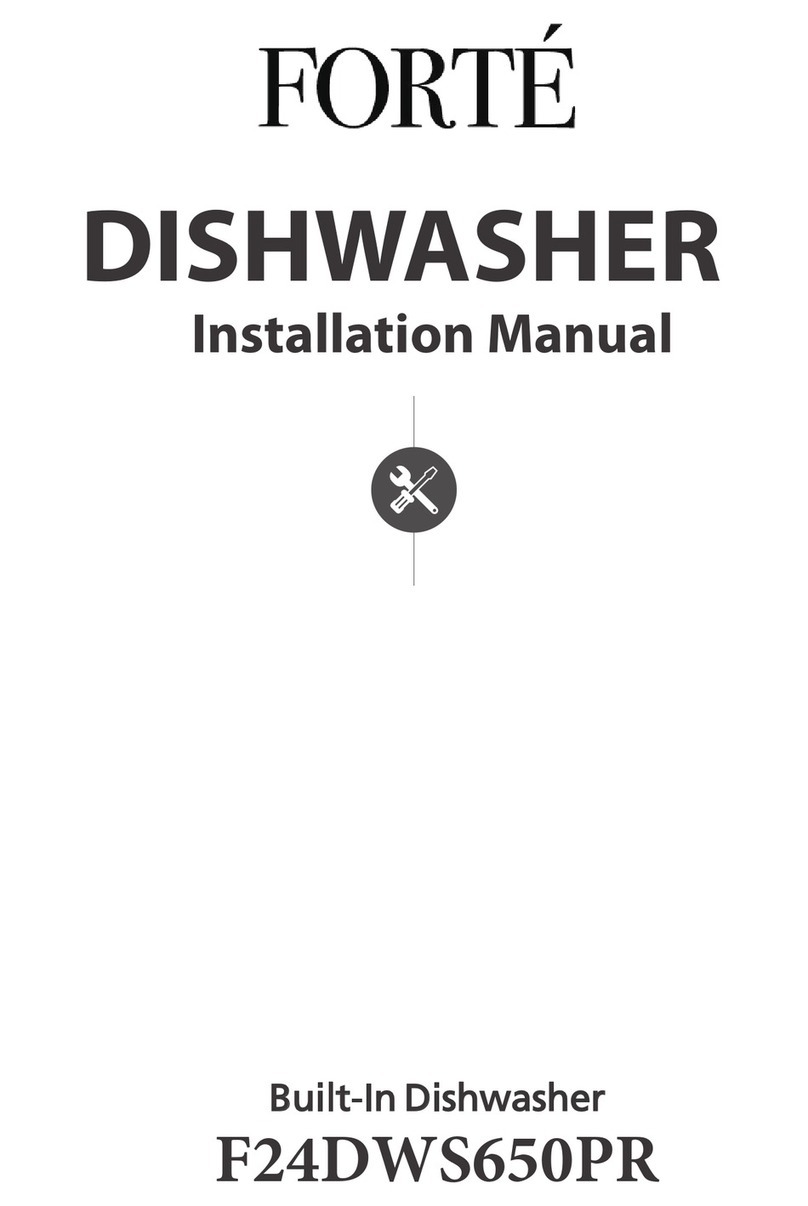
Forte
Forte F24DWS650PR User manual

Forte
Forte F24DWS250SS User manual
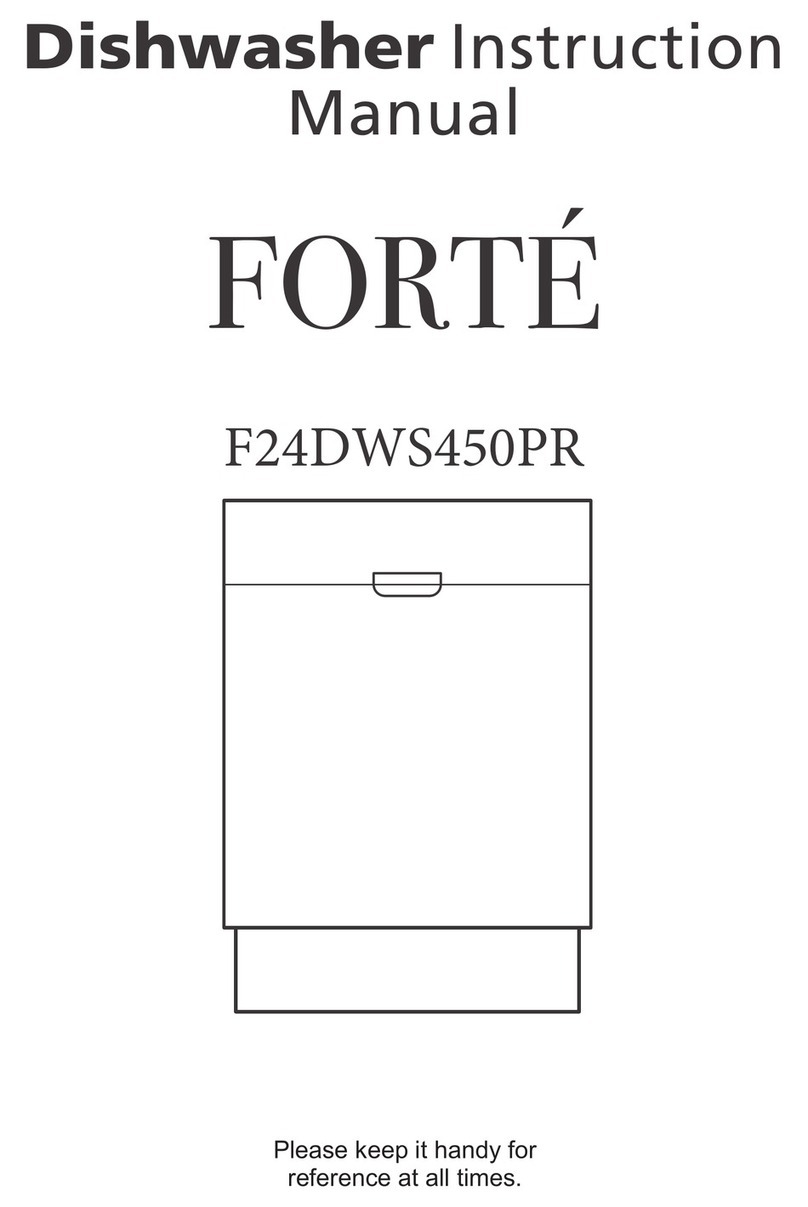
Forte
Forte F24DWS450PR User manual
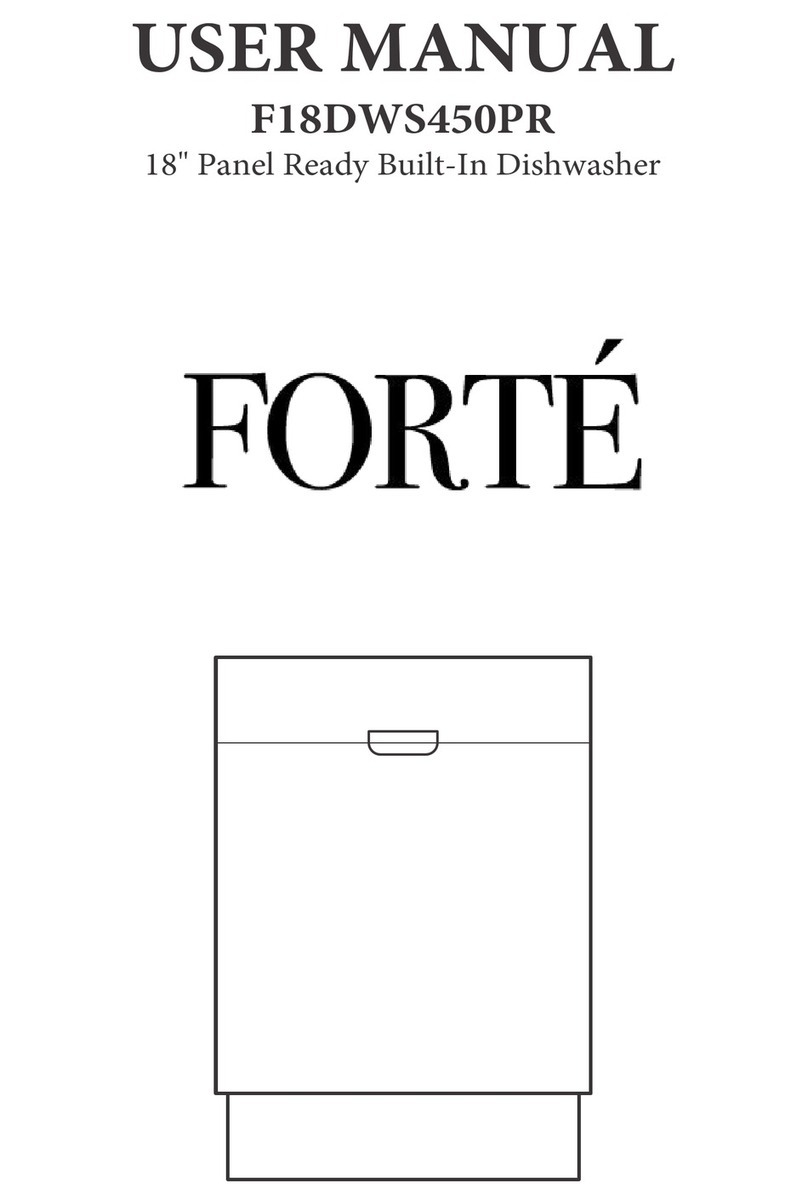
Forte
Forte F18DWS450PR User manual

Forte
Forte 250 Series User manual
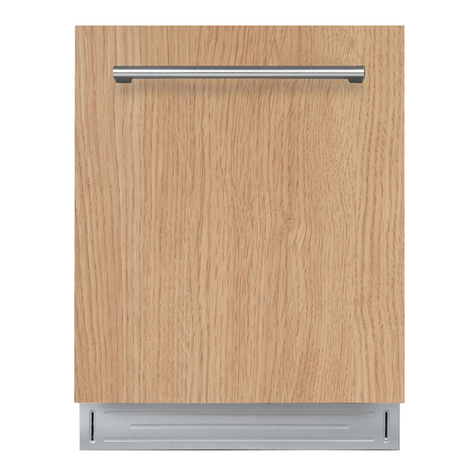
Forte
Forte F24DWS450PR User manual
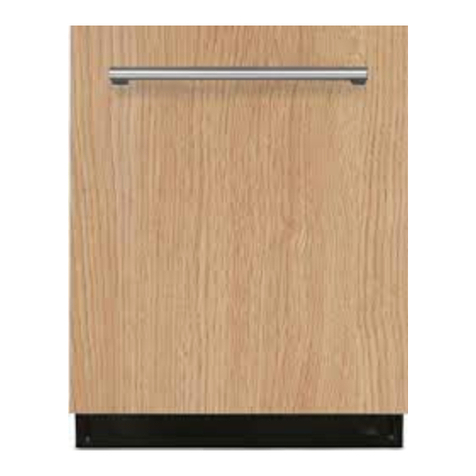
Forte
Forte F24DWS650PR User manual
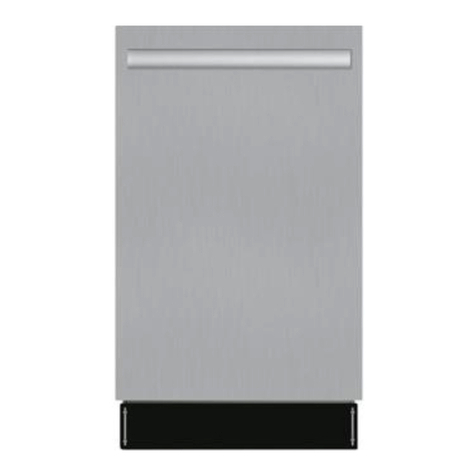
Forte
Forte F18DWS250SS User manual
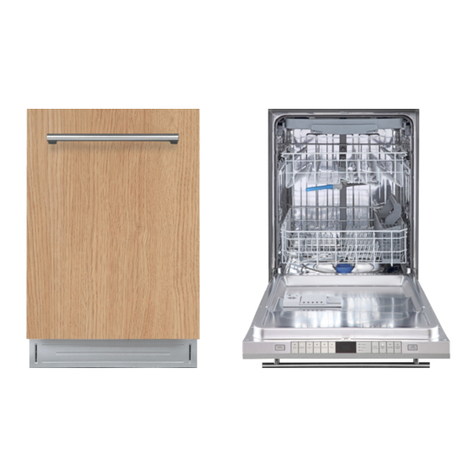
Forte
Forte F24DWS650PR User manual

Forte
Forte F18DWS450PR User manual

